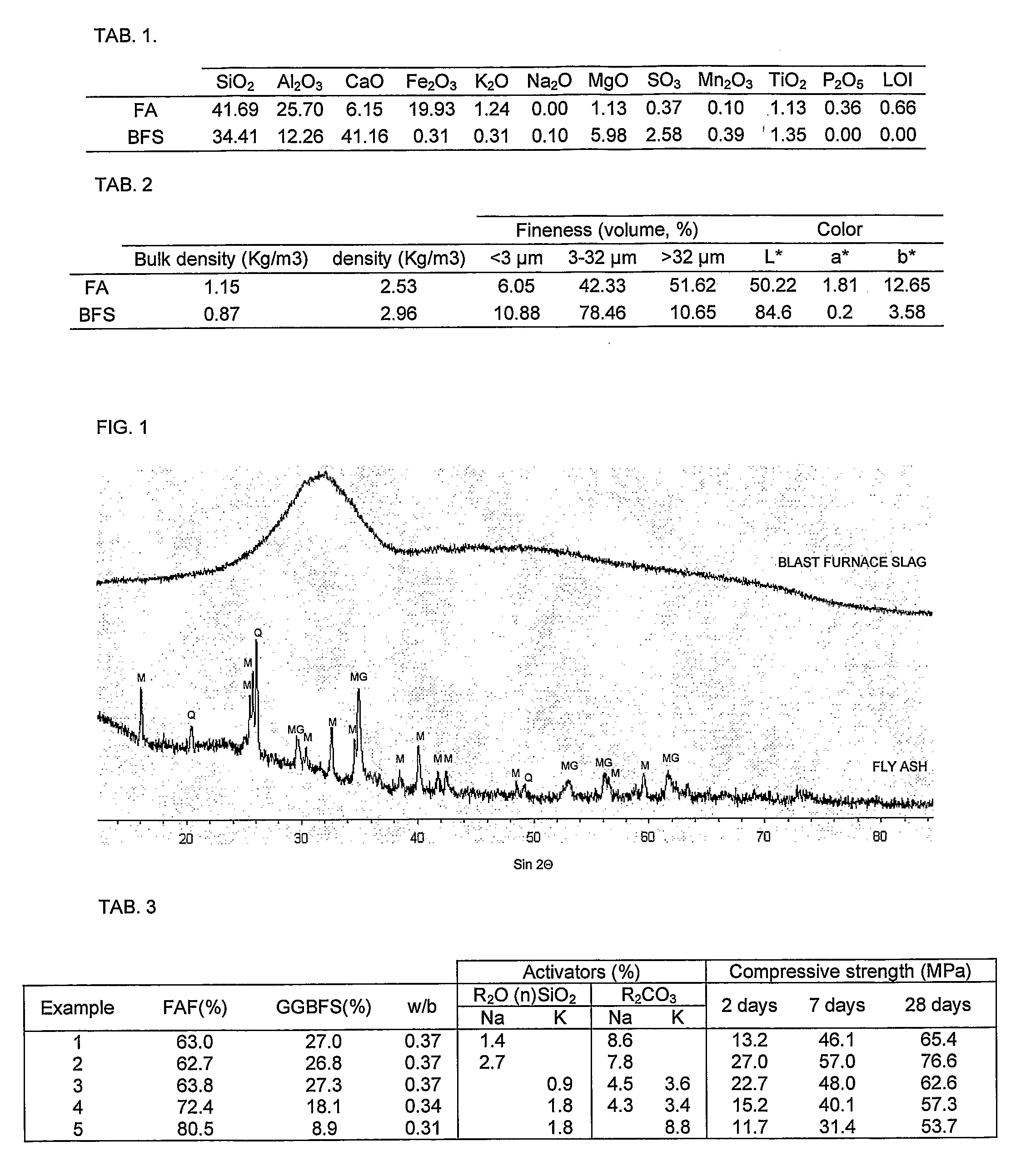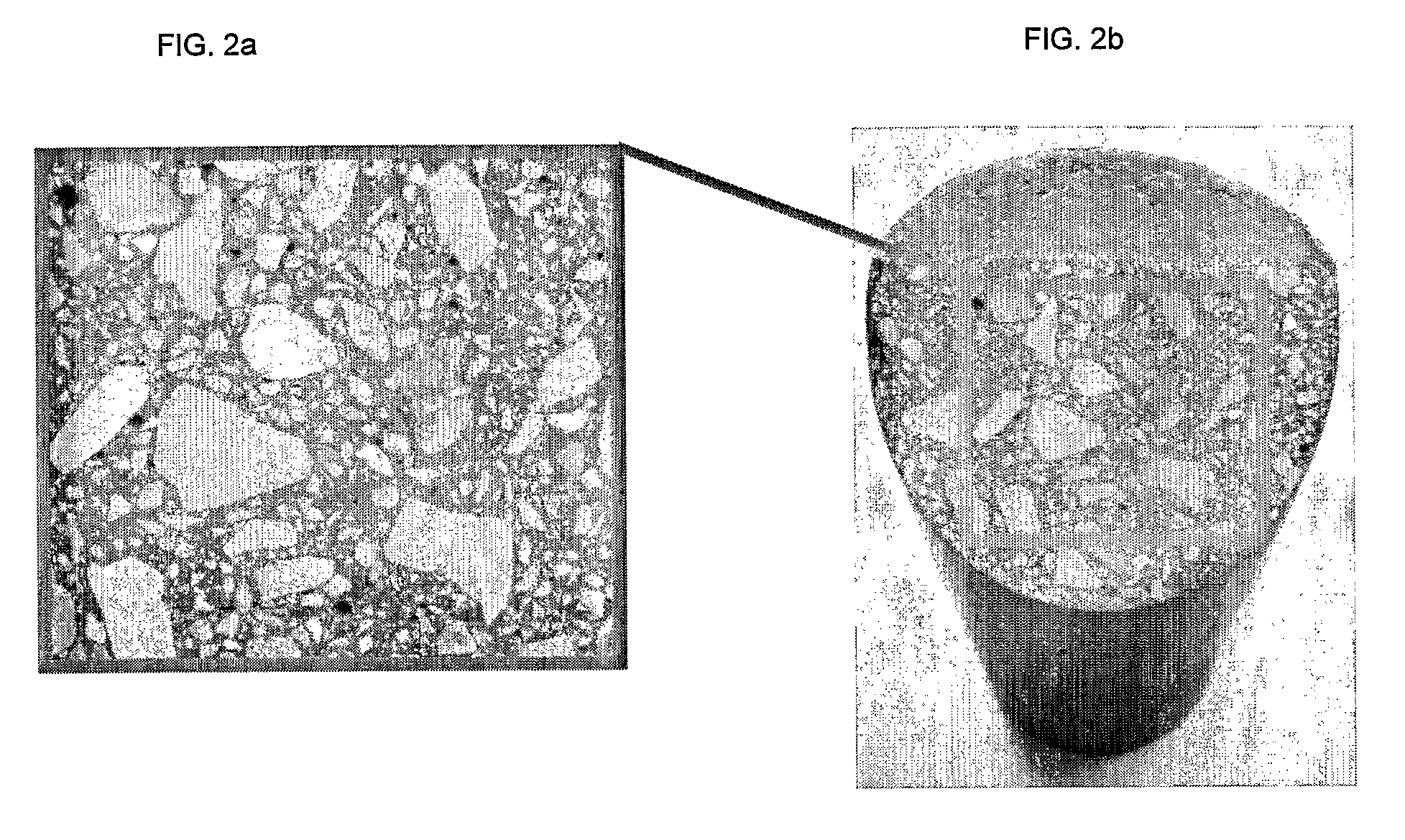Universal hydraulic binder based on fly ash type F
a hydraulic binder and fly ash technology, applied in the direction of sustainable waste treatment, solid waste management, coatings, etc., can solve the problems of limited replacement quantity, initial low strength, fast neutralization, etc., and achieve the effect of robust product and process
- Summary
- Abstract
- Description
- Claims
- Application Information
AI Technical Summary
Benefits of technology
Problems solved by technology
Method used
Image
Examples
Embodiment Construction
[0043]The binder according to the invention is manufactured from fly ash, blast furnace slag and chemical activators.
[0044]The dry hydraulic binder according to the invention comprises:[0045]Fly ash containing less than 8% w / w of CaO: 60-85% by weight;- Blast furnace slag: 8-28% by weight; and[0046]A chemical activator containing:[0047]From 1 to 4 wt. % of alkaline silicates; and[0048]From 7 to 11 wt. % of alkaline carbonates.
[0049]Advantageously, the fly ash is pure class F fly ash.
[0050]Fly ash is the main component of the binder. Fly ashes are mainly composed by aluminosilicates partially vitrified, as well as mineral phases such as quartz, hematite, magnetite, anhydrite and so on which had been present as impurities in the original coal. Class F fly ash contains more than 70% of silica, alumina and ferric oxide and typically less than 8% of calcium oxide.
[0051]Table 1 presents the typical chemical composition, obtained by X-Ray Fluorescence, of class F fly ash (FAF) used in the ...
PUM
| Property | Measurement | Unit |
|---|---|---|
| molar ratio | aaaaa | aaaaa |
| cementitious | aaaaa | aaaaa |
| weight | aaaaa | aaaaa |
Abstract
Description
Claims
Application Information
 Login to View More
Login to View More - R&D
- Intellectual Property
- Life Sciences
- Materials
- Tech Scout
- Unparalleled Data Quality
- Higher Quality Content
- 60% Fewer Hallucinations
Browse by: Latest US Patents, China's latest patents, Technical Efficacy Thesaurus, Application Domain, Technology Topic, Popular Technical Reports.
© 2025 PatSnap. All rights reserved.Legal|Privacy policy|Modern Slavery Act Transparency Statement|Sitemap|About US| Contact US: help@patsnap.com


